Best Console Servers for Data Centers in 2024
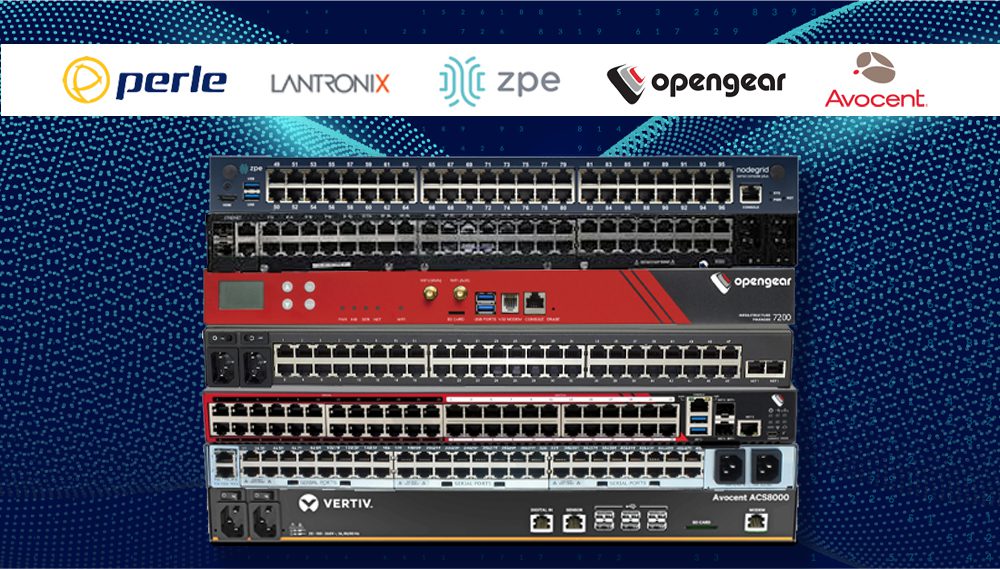
Console servers – also known as serial consoles, console server switches, serial console servers, serial console routers, or terminal servers – are critical for data center infrastructure management. At a bare minimum, they provide unified remote access to data center devices using out-of-band (OOB) management, which separates the control plane from the data plane. However, this is just the starting point when it comes to console server best practices The best console servers deliver this and fast, reliable network access, robust security functionality, and support for infrastructure and network automation.
This guide compares the best console servers for data centers so you can choose the right solution for your environment.
Feature Comparison
|
ZPE Nodegrid NSCP |
Opengear CM8100 | Perle IOLAN SCG LWM | Lantronix LM83X | Vertiv Avocent ACS8000 | |
| Cellular OOB | ✔ | ✖ | ✔ | ✔ | ✔ |
| ZTP for End Devices | ✔ | ✔ | ✔ | ✔ | ✔ |
| Guest OS | ✔ | ✔ | ✖ | ✖ | ✖ |
| 3rd Party Automation | ✔ | ✔ | ✖ | ✖ | ✖ |
| Embedded Firewall | ✔ | ✔ | ✔ | ✖ | ✖ |
| 3rd Party Security | ✔ | ✖ | ✔ | ✖ | ✖ |
| Disclaimer: This comparison was written by a 3rd party in collaboration with ZPE Systems using data gathered from publicly available data sheets and admin guides as of 7/22/24. A dash (-) indicates that information was not publicly available or we were not able to find it. Please email us if you have corrections or edits or want to review additional attributes: Matrix@zpesystems.com |
Comparing the best console servers for data centers
Let’s take an in-depth look at the hardware, features, and functionality of the best console servers for data centers in 2024.
ZPE Nodegrid Serial Console Plus (NSCP)


OOB and Networking: The Nodegrid Serial Console (NSC) family of console servers consolidates and streamlines data center management by providing up to 96 serial RJ45 ports in a 1U form factor device (Patent No. 9,905,980). The Nodegrid Serial Console Plus (NSCP) model also comes with built-in 4G/5G LTE and Wi-Fi for failover and OOB management.
Automation: The NSCP supports automation in numerous forms, offering device auto-discovery via network scan and custom probes, extending zero-touch provisioning (ZTP) to other vendors’ end devices, and easily integrating with (or even directly hosting) third-party automation and orchestration solutions. The NSCP runs on the open, Linux-based Nodegrid OS and uses Intel x86 CPUs, allowing it to natively run VM and Docker applications for other vendors’ software. This includes full support for NetOps automation solutions like Ansible, Chef, Docker, and Puppet. Additionally, the vendor-neutral, web-based ZPE Cloud solution provides a unified orchestration platform for efficient management of large and distributed data center infrastructure.
Security: The NSCP protects the control plane with on-board hardware security features like BIOS protection, TPM 2.0, UEFI Secure Boot, and geofencing. Plus, the embedded firewall offers advanced features like selectable cryptographic protocols and cypher suite levels, multi-site IPsec VPN, AD/LDAP, RADIUS, TACACS+, and Kerberos authentication, as well as 2FA and SAML 2.0.
ZPE Nodegrid Serial Console Plus Key Takeaways:
| Advantages |
• Up to 96 managed serial ports in a 1U appliance • Fast OOB with 4G/5G LTE and Wi-Fi • Auto-discovery via network scan and custom probes • Comprehensive security including SAML 2.0 • Supports ZTP and NetOps orchestration tools • Vendor-neutral orchestration platform • Intel x86 CPU and lots of RAM for 3rd-party Docker and VM apps |
| Limitations | • USB ports limited on 96-port version |
Opengear CM8100
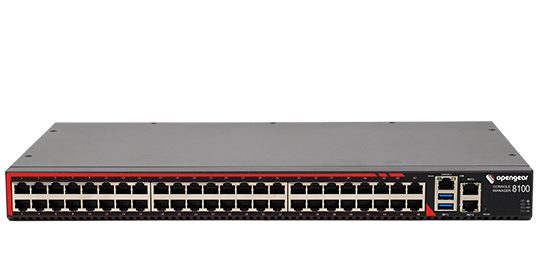
OOB and Networking: The Opengear CM8100 line of Smart OOBTM console servers comes with 16, 32, 48, or 96 (in the 2RU model) serial ports and two USB 2.0 console ports for a maximum of 98 managed devices. Their “smart” OOB solution is so named because it includes automatic port discovery and VLAN support. None of the CM8100 models support cellular access, so OOB and failover are provided via dual LAN ports or dual LAN/SFP ports. Additionally, it provides some gateway router features like DDNS and DHCP.
Automation: The CM8100 uses ZTP and RESTful APIs for automation, and the embedded Linux operating system is programmable and extensible with third-party integrations. In addition, their Lighthouse management software can be upgraded to the enterprise edition, which supports Docker containers and Python scripts.
Security: The CM8100 offers some security features such as IPsec & OpenVPN, SSL tunnels, and Secure Shell (SSHv2), as well as advanced authentication via TACACS+, Kerberos, RADIUS, and more. In addition, the CM8100 provides a stateful firewall with IP filtering and port forwarding. However, it does not support 2FA, SAML 2.0, or multi-site IPsec VPN.
Opengear CM8100 Key Takeaways:
| Advantages |
• Automatic port discovery • Gateway router features • Extensible OS |
| Limitations |
• No cellular access • No support for 2FA or SAML 2.0 • Automation and ZTP require Lighthouse Enterprise software upgrade |
Perle IOLAN SCG LWM
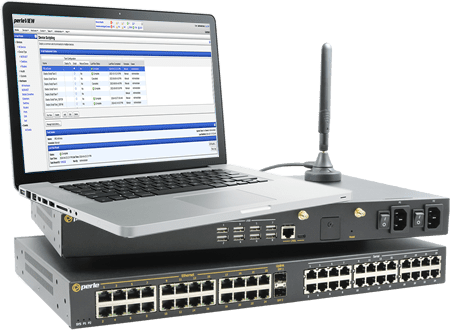
OOB and Networking: The Perle IOLAN SCG LWM console server is a robust solution that can be customized with on-board Wi-Fi, integrated V.92 model failover, and built-in 4G LTE failover. It has a modular design that supports any mix-and-match combination of 16 serial RJ45 or 3.0 interface cards up to 48 total ports.
Automation: The IOLAN SCG LWM has the least impressive internal hardware on our list, with an underpowered 500 MHz core 32-bit ARM processor and little storage or memory headroom for automation. It supports zero-touch provisioning and auto-discovery via LLDP (Link Layer Discovery Protocol), but does not integrate with third-party automation or orchestration solutions.
Security: Perle IOLAN console servers come with an embedded firewall and security features such as two-factor authentication (2FA), remote RADIUS, TACACS+, and LDAP authentication, and both IPsec VPN and OpenVPN.
Perle IOLAN SCG LWM Key Takeaways:
| Advantages |
• Wi-Fi, dial-up, and 4G LTE failover • Comprehensive firewall and security features • ZTP and LLDP auto-discovery • Modular mix-and-match interface cards |
| Limitations |
• Very limited CPU, RAM, and flash storage • No third-party integrations with Docker, etc. |
Lantronix LM83X

OOB and Networking: The Lantronix (formerly Uplogix) LM83X console server comes with three expansion bays for a total of 104 managed serial devices. It uses 4G LTE cellular, V.92 modem, fiber, DSL, or satellite interfaces for OOB and failover, providing a lot of flexibility for data centers in hard-to-reach areas.
Automation: The LM83X has 256 GB of NVMe storage, but its ARM CPU architecture prevents it from running VMs, Docker containers, and third-party automation and orchestration solutions. The LM83X and connected devices can be managed with the Lantronix Control Center on-premises software, which includes comprehensive device monitoring capabilities and some automation and playbook capabilities. However, it does not support any third-party automation tools or custom scripts.
Security: The LM83X comes with some built-in security features, including secure SSH tunnels, remote authentication via LDAP, RADIUS, or TACACS+, and IP and caller ID filtering. It does not, however, come with an embedded firewall or VPN.
Lantronix LM83X Key Takeaways:
| Advantages |
• Supports up to 104 serial devices with expansion cards • Flexible OOB and failover options • Robust device monitoring tools |
| Limitations |
• No third-party support for automation or orchestration • Can’t run Guest OS or third-party apps • No embedded firewall |
Vertiv Avocent ACS8000
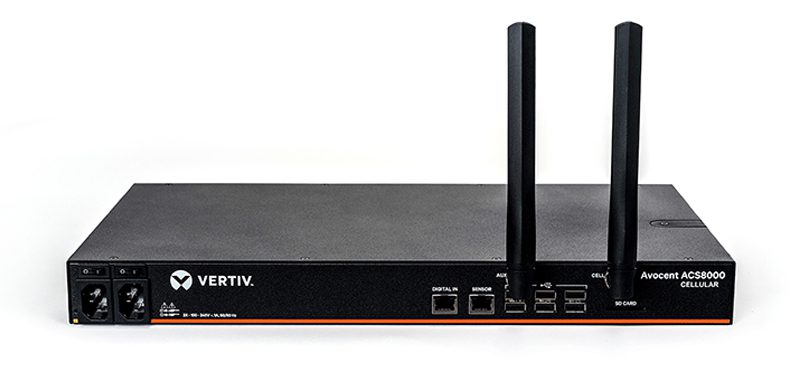
OOB and Networking: The Vertiv Avocent ACS8000 console server comes in 8, 16, 32, and 48-port serial RJ45 models with USB. It uses 4G LTE connectivity for WAN, OOB, and failover, and has ports for environmental sensors to provide visibility into data center operating conditions. Its minimum port speeds are faster than average, at 1200 bps. Avocent console servers come with an updated Linux OS and the proprietary DSViewTM software to help you manage and monitor your OOB solution. This includes console event logging and notifications, such as “dying gasp” alarms when systems unexpectedly lose power.
Automation: The ACS8000’s internal hardware leaves little headroom to grow and is optimized for cost. It has a dual-core ARM 766MHz CPU and a maximum of 16 GB RAM and 16 GB flash storage. This architecture does not support VMs, Docker apps, or third-party automation and orchestration, though the ACS8000 does have ZTP.
Security: Security-wise, ACS8000 serial consoles lack an embedded firewall, advanced authentication features, and VPN functionality, though they do support FIPS 410-2 cryptography.
Vertiv Avocent ACS8000 Key Takeaways:
| Advantages |
• 4G LTE WAN, OOB, and failover support • Environmental sensor port • Faster than average minimum port speeds |
| Limitations |
• CPU, RAM, and flash storage under par • No embedded firewall or advanced security features • No support for Docker or third-party orchestration |
How to choose the best console server for your data centers
All of the best console servers deliver remote out-of-band management, automatic zero-touch provisioning, and some security features. However, only the Nodegrid Serial Console Plus and the Opengear CM8100 offer true network infrastructure automation and orchestration capabilities via open OS architectures that allow for third-party integrations. And only Nodegrid secures NetOps automation with robust on-board hardware security protection and a full suite of firewall, encryption, and authentication features including 2FA and SAML.
To learn more about Nodegrid console servers, contact ZPE Systems or watch a demo.
Ready to replace your outdated console servers?
We know that replacing outdated, EOL devices takes a lot of effort. That’s why ZPE now offers a complete package of budget-friendly products and engineering services to help. Click here to see how we make it easy to upgrade to the best console servers.
